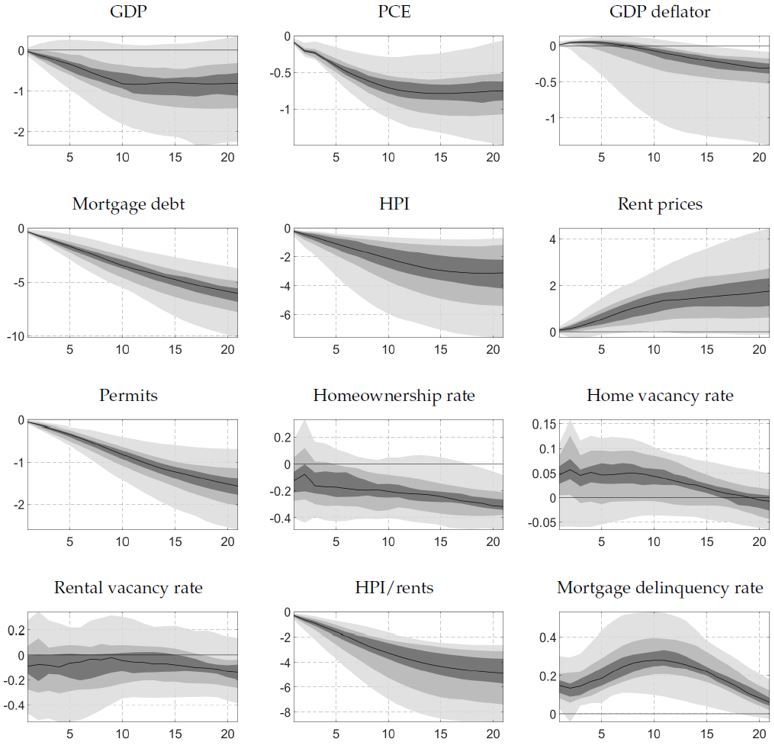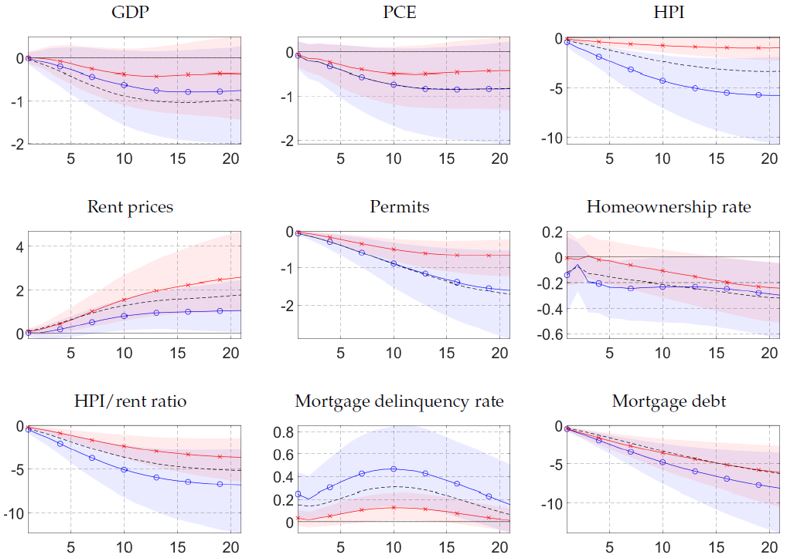References
Aastveit, K. A., Albuquerque, B. and Anundsen, A. (2023), “Changing Supply Elasticities and Regional Housing Booms”, Journal of Money, Credit, and Banking 55(7): 1749–1783.
Aastveit, K. A. and Anundsen, A. (2022), “Asymmetric Effects of Monetary Policy in Regional Housing Markets”, American Economic Journal: Macroeconomics 14(4): 499–529.
Albuquerque, B., Iseringhausen, M. and Opitz, F. (2020), “Monetary policy and US housing expansions: The case of time-varying supply elasticities”, Economics Letters 195, 109471.
Albuquerque, B., Iseringhausen, M. and Opitz, F. (2024), “The Housing Supply Channel of Monetary Policy”, ESM Working Papers, No. 59, European Stability Mechanism.
Anundsen, A. K. and Heebøll, C. (2016), “Supply restrictions, subprime lending and regional US house prices”, Journal of Housing Economics 31(C): 54–72.
Chodorow-Reich, G., Guren, A. M. and McQuade, T. J. (2024), “The 2000s Housing Cycle with 2020 Hindsight: A Neo-Kindlebergerian View”, The Review of Economic Studies, forthcoming.
Cooper, D. H., Luengo-Prado, M. J. and Olivei, G. P. (2022), “Monetary policy and regional house-price appreciation”, International Journal of Central Banking 18(3): 173–227.
Dias, D. A. and Duarte, J. B. (2019), “Monetary policy, housing rents, and inflation dynamics”, Journal of Applied Econometrics 34(5): 673–687.
Ferreira, F. and Gyourko, J. (2012), “Heterogeneity in Neighborhood-Level Price Growth in the United States, 1993-2009”, American Economic Review 102(3): 134–140.
Fischer, M. M., Huber, F., Pfarrhofer, M. and Staufer-Steinnocher, P. (2021), “The Dynamic Impact of Monetary Policy on Regional Housing Prices in the United States”, Real Estate Economics 49(4): 1039–1068.
Gertler, M. and Karadi, P. (2015), “Monetary Policy Surprises, Credit Costs, and Economic Activity”, American Economic Journal: Macroeconomics 7(1), 44–76.
Gürkaynak, R. S., Sack, B. and Swanson, E. (2005), “Do Actions Speak Louder Than Words? The Response of Asset Prices to Monetary Policy Actions and Statements”, International Journal of Central Banking 1(1), 55–93.
Gyourko, J., A. Saiz and A. Summers (2008), “A New Measure of the Local Regulatory Environment for Housing Markets: The Wharton Residential Land Use Regulatory Index”, Urban Studies 45(3): 693–729.
Herkenhoff, K. F., L. E. Ohanian and E. C. Prescott (2018), “Tarnishing the Golden and Empire States: Land-Use Restrictions and the U.S. Economic Slowdown”, Journal of Monetary Economics 93: 89–109.
Huang, H. and Tang, Y. (2012), “Residential land use regulation and the US housing price cycle between 2000 and 2009”, Journal of Urban Economics 71(1): 93–99.
Iacoviello, M. (2005), “House prices, borrowing constraints, and monetary policy in the business cycle”, American Economic Review 95(3): 739–764.
Koeniger, W., Lennartz, B. and Ramelet, M.-A. (2022), “On the transmission of monetary policy to the housing market”, European Economic Review 145, 104107.
Piazzesi, M. and M. Schneider (2016), Housing and Macroeconomics, Vol. 2 of Handbook of Macroeconomics, Elsevier, 1547–1640.
Saiz, A. (2010), “The Geographic Determinants of Housing Supply”, The Quarterly Journal of Economics 125(3): 1253–1296.








